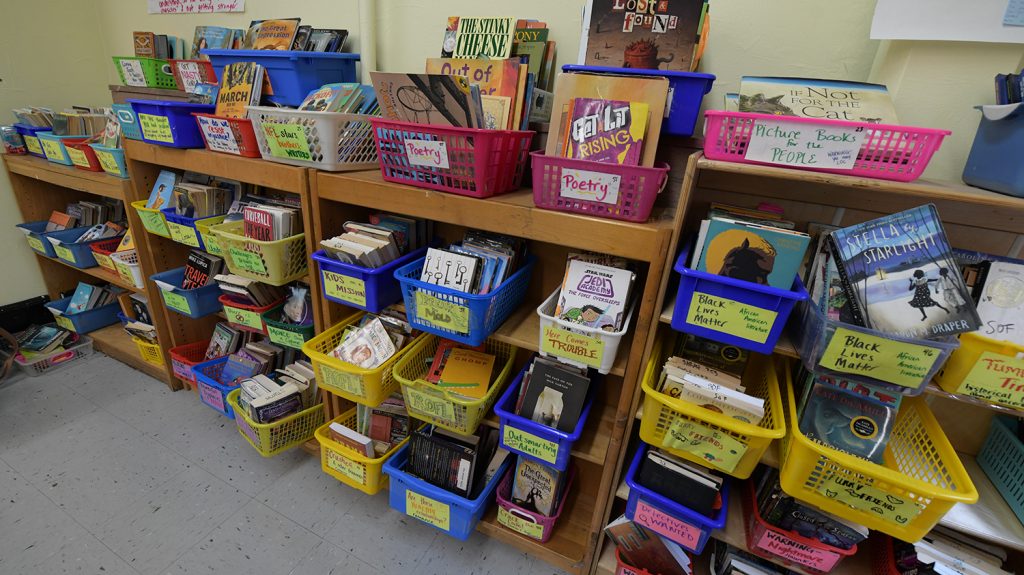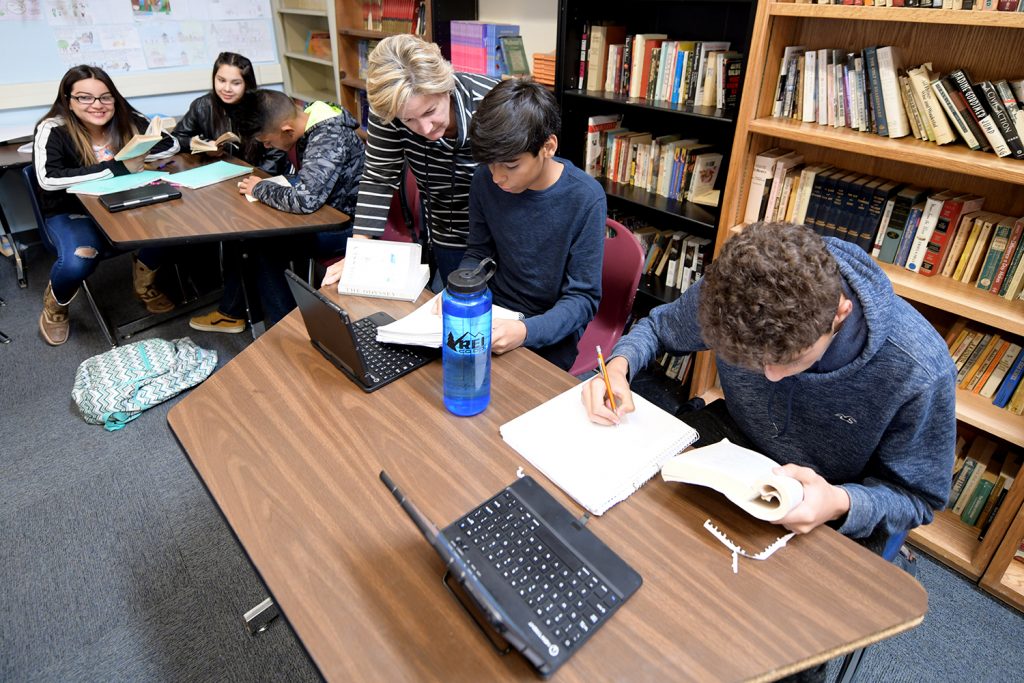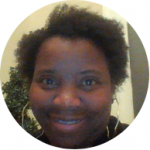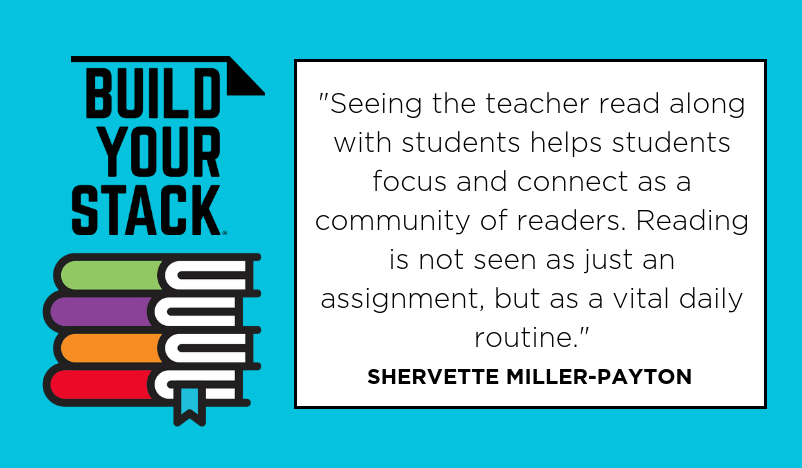This blog post is part of Build Your Stack,® a new initiative focused exclusively on helping teachers build their book knowledge and their classroom libraries. It was written by NCTE member Shervette Miller-Payton.
As English teachers, we often wonder how we can get students to love reading outside of mere class assignments. In Griffin, Georgia—a small town forty miles outside of Atlanta—high school English teacher Onessia Mosby has opened the world’s doors for students through her classroom library. As a district curriculum coordinator, I visited her class for a brief formal observation and saw teenagers enthralled in reading various novels—some silently reading, some discussing with partners. I learned from her four tips that fostered this level of engagement.

1. Devote Class Time to Independent Reading
Teachers have so many things to manage in each class period—homework check, attendance, assignments, assessments, student behaviors, and more. Stopping to read silently may seem like a wasted diversion from the business of school. But Onessia Mosby recognizes the importance of silent reading as an integral activity that can build upon other skills that she wants students to learn. As soon as her students walk in the door, they all begin reading for the first ten minutes of class a book or magazine that interests them. She joins them in reading silently. No one shares or discusses yet. She notes, “I’m not just walking around monitoring them because it’s not about that. I have found things that I love to read as well, so I’m modeling how good reading looks.” After reading, each student jots down the date, title, and pages read on a bookmark. She does not attach reading log requirements that have been hotly debated among teachers. Ms. Mosby posts her reading log on a wall chart so students can see that the same expectations she has for them she also has for herself. Seeing the teacher read along with students helps students focus and connect as a community of readers. Reading is not seen as just an assignment, but as a vital daily routine.
2. Manage a Personalized Check-Out System
When a student wants to borrow a book from the classroom library, Ms. Mosby emails the student a picture of the book along with a personalized note, which can start a casual conversation about the book and again bring students into the community of reading. Teachers could also use a free electronic tracking system such as Booksource Classroom Organizer.

3. Turn Conferences into Conversations
Reading conferences are an essential part of understanding readers’ needs and interests. In addition to being an assessment, conferences can hook students into loving book discussions. When students finish books, they notify Ms. Mosby and she asks a variety of comprehension questions about their reading process such as Why did you pick this book? Which character in the book do you like the most? Which event or character reminds you of something else you have read or experienced? She also shares ideas about the book she is reading. She adds, “The conversation allows me to see that they’re actually making connections and that they truly enjoyed the book because our main purpose here is to enjoy reading.” During the conversations, teachers can record notes about students’ understanding of standards in order to inform future instruction.
4. Chat and Pitch Books
“When a student finishes a book,” Ms. Mosby says, “I ask them to take a sticky note and basically pitch their book to future students. On that sticky note, they write in their own words a quick persuasive message to convince a specific audience that the book would be interesting to them. This gives students an opportunity to practice rhetorical techniques and allows other students to get a peer’s snapshot of the book.” Students also engaged in literature circles and online book discussions on Goodreads or Google Classroom. I was impressed with a chat and pitch that Ms. Mosby gave for Sharon Draper’s Forged by Fire. A student immediately asked to read it next. These personal recommendations go beyond basic summaries on book covers. Students want to experience what others have experienced with books.
If you were to visit Ms. Mosby’s class, you might think that the students were naturally advanced learners who always loved reading, but that love was spurred by a teacher devoted to authentic reading—reading that thrives with conversation and connection.

Shervette Miller-Payton leads secondary English language arts curriculum development and cross-curricular literacy training in a Georgia school district. She can be reached on Twitter at @shervettemiller.

Onessia Mosby is a National Board Certified Teacher in her 19th year of inspiring young scholars. She is currently teaching American literature at Griffin High School.

